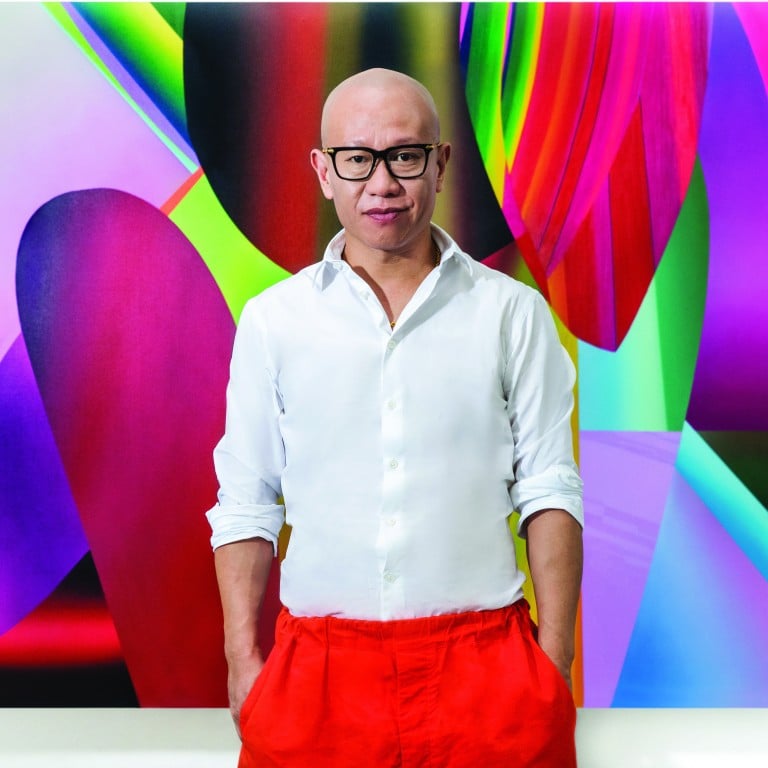How has Covid-19 influenced Liu Wei’s artworks? The Chinese contemporary artist on his solo exhibition at Shanghai’s Long Museum West Bund and welcoming the Year of the Ox with Hennessy V.S.O.P

Contemporary artist Liu Wei is known internationally for his provocative sculptural works, such as Indigestion II (2004), a two-metre-long mound of human excrement studded with half-digested toy soldiers. Or Love It! Bite It! (2005), a model of the Colosseum, Guggenheim Museum and other iconic buildings in the Western architectural canon, all painstakingly assembled out of edible dog chews. But he is far more than an artist merely out to shock.
Defying categorisation in both style and theme, his oeuvre includes paintings, installations, sculptures, photographs and video, and evokes subjects as wide-ranging as urbanisation and the body, capitalism and colonialism, consumption and ruin.

As a participating artist in the seminal exhibition “Post-Sense Sensibility: Alien Bodies and Delusion” in Beijing in 1999, which became the foundation of China’s “new wave” art scene, Liu has been at the cutting edge of Chinese art for two decades.

“The social stagnation brought by the epidemic has given me room for reflection,” says Liu. “A lot of problems that have arisen from the rapid development of contemporary society have been exposed due to the pandemic. To a certain extent, this has brought extended thinking and possibilities to my creations.”
Liu’s highly anticipated large-scale solo exhibition, “Liu Wei: 散場/Over”, ran at the Long Museum West Bund in Shanghai from November 11, 2020, to January 17 this year. Sprawling over 30,000 sq ft of exhibition space, it showcased his recent installations, sculptures and paintings. But the pandemic meant that the exhibition’s scale was not the only way in which it was unlike any that Liu had previously put on.

“Throughout the preparation process, I was not able to communicate with the organisers face-to-face, and this affected my work,” explains Liu. “In addition, many audiences were not able to experience the artworks themselves, which is also a practical and direct impact. This triggered me to think about whether I could change the medium of my artwork throughout the creation process.”
He avoided using materials just because he had used them in the past as “those materials may have altered based on the ever-changing environment and may have lost their meaning already, and I believe that the selection of materials is my way of expressing myself, but is not the ultimate objective.”
He has also considered moving into performance art, and has begun painting again, as a resistance to – or what he calls an “interruption” in – the ubiquity of technology.

“I specially chose to use canvas oil painting, integrating inkjet and painting in the creation,” says Liu. “I selected energetic and vital colour combinations to suggest happiness and hope.”
All of my artworks are created for an audience, and the audience is especially important in the process of presenting my art pieces
The artwork is a departure from his sometimes caustic critiques of modern culture, but Liu says he hopes the work still speaks to his audience.
“My exhibition ‘散場/Over’ demonstrated my thinking on long-term topics, such as the body, material things, ideology and the world order, while this collaboration with Hennessy is different, being about celebration, spring and the richness and complexity of Hennessy cognac,” he says.
“All of my artworks are created for an audience, and the audience is especially important in the process of presenting my art pieces. Both my personal artistic creations and this limited-edition packaging collaboration exist in my complete structure of creation, and I hope will be meaningful.”
For Liu, art goes beyond the purely decorative and, while it might not have a specific role, always has a social function.
“This is where the beauty of art lies. I believe human beings should care about society, and reflect on what it means to be human,” he says. “We should not limit ourselves only to think about survival, even in adverse situations and difficult times.”
Want more stories like this? Sign up here. Follow STYLE on Facebook, Instagram, YouTube and Twitter.

- His provocative artworks, like models of the Colosseum and Guggenheim Museum made from dog treats, established Liu Wei as part of China’s ‘new wave’ art scene
- French Cognac brand Hennessy recently commissioned him to create a painting for its limited edition 2021 releases celebrating the Lunar New Year